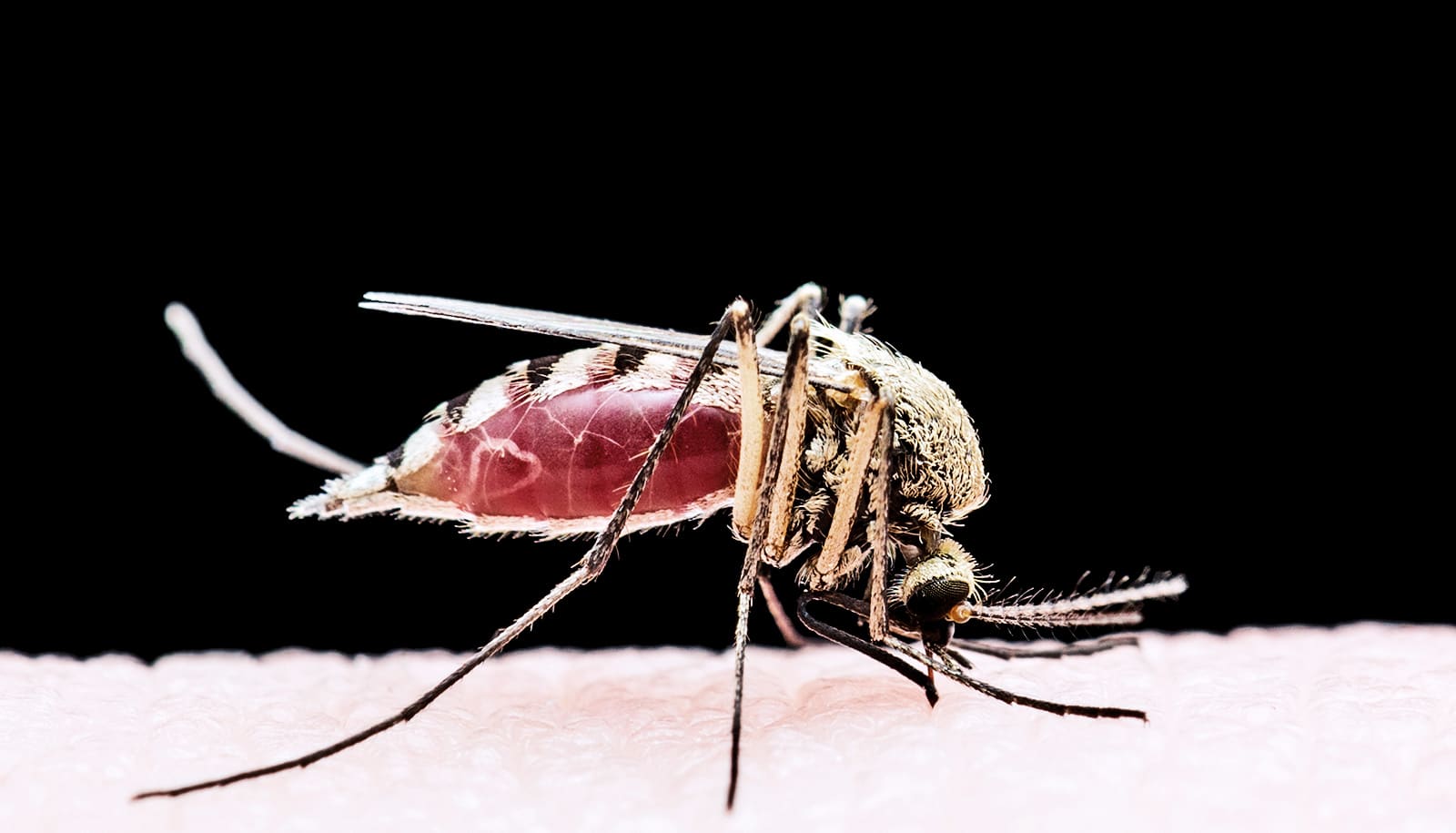Mosquitoes can hear over distances much greater than anyone suspected, researchers report.
Until now, scientists believed that organisms required eardrums for long-range hearing, and that the feathery antennae with fine hairs that mosquitoes and some insects use to hear only worked at close distances of several centimeters (a few inches).
A series of experiments has now provided neurophysiological and behavioral evidence that Aedes aegypti mosquitoes—which transmit such diseases as yellow fever, Dengue, Zika, West Nile, and Chikungunya viruses—can hear specific frequencies as far away as 10 meters (32 feet) or more.
These frequencies overlapped well with the frequencies of female mosquitoes in flight as well as human speech.
“It’s been known for quite a long time that male mosquitoes are drawn to the sound of the female’s beating wings,” says Ron Hoy, professor of neurobiology and behavior and senior author of a paper on the research in Current Biology.
Hoy notes that since mosquitoes mate in mid-air, the sound of the female’s wings buzzing sets the males in motion. Previous experiments to prove that males are drawn to the sounds of females in flight were done at close range, which reinforced the idea that they only hear at close range—up to 30 centimeters (approximately 1 foot).
Hearing tests
Past research by the researchers to prove hearing in jumping spiders gave them the methods and skills needed to tap the auditory nerves of mosquitoes, and record the electrical potential of the excited nerves.
Initial tests in the lab revealed the mosquitoes’ auditory nerves picked up sounds from across a room. To prove this principle, the researchers set up an experiment in Barton Hall, a field house with a 30 meter (100-foot) ceiling that would reduce echoes. First author Gil Menda, a postdoctoral researcher in Hoy’s lab, fitted mosquitoes with an electrode in their brains and made neurophysiological recordings of the auditory nerve being stimulated by pure-tones emitted from a loudspeaker 10 meters (about 33 feet) away.
The mosquitoes’ frequency range for hearing overlaps with human speech, which means “they should be able to hear” people speaking.
“They’re hearing at distances that normally require ear drums, but these are hairs,” says Hoy. Ear drums work by picking up pressure from sound waves, while tiny hairs sense sound from air particles vibrating at certain frequencies.
They then moved the nerve physiology equipment to a super-quiet anechoic room collaborator Ron Miles, professor of mechanical engineering at Binghamton University, runs. “It’s the quietest room in the Northeast and possibly in the country,” Hoy says.
“We found the sweet spot of frequency that the mosquitoes are sensitive to was between 150 to 500 hertz,” Menda says. He played back the tones of females’ wings beating, which occurs at a frequency of about 400 hertz. In behavioral experiments, when these 400-hertz tones were played from as far as 3 meters (about 10 feet) away—the length of the room—male mosquitoes in a mesh cage all instantly took to flight. The behavioral reaction was proved in individuals, to make sure they weren’t taking flight as part of a group response.
Human speech
The mosquitoes’ frequency range for hearing also overlapped with human speech. “The most energetic frequencies of an average human vowel is in the range of 150 to 900 hertz,” Hoy says, so “they should be able to hear” people speaking.
Also, using the anechoic room, “we showed the sensitivity of the male mosquito was so low that when I played a tone, it was hard for me to hear it, but I can see the mosquito can hear it,” Menda says. They recorded excited auditory nerves at 30 decibels. Human speech is typically spoken at 45 to 70 decibels, also within the mosquito’s sweet spot.
While the study provides both neurophysiological and behavioral evidence that male mosquitoes hear sounds from far field, it offers no proof that they use it to home in on people. The insects are known to pick up sensory cues such as carbon dioxide, odors, and warmth to locate people. But the results do show an intriguing correlation, Hoy says.
Though the study does not suggest viable new avenues for mosquito control, it does open the door for developing highly sensitive directional microphones and hearing aids that use fine hairs that sense the speed of air particles as they are jostled by passing soundwaves.
Additional coauthors are from Cornell and Harvard University. The National Institutes of Health and a Gates Challenges Explorations Grant funded the research.
Source: Cornell University



